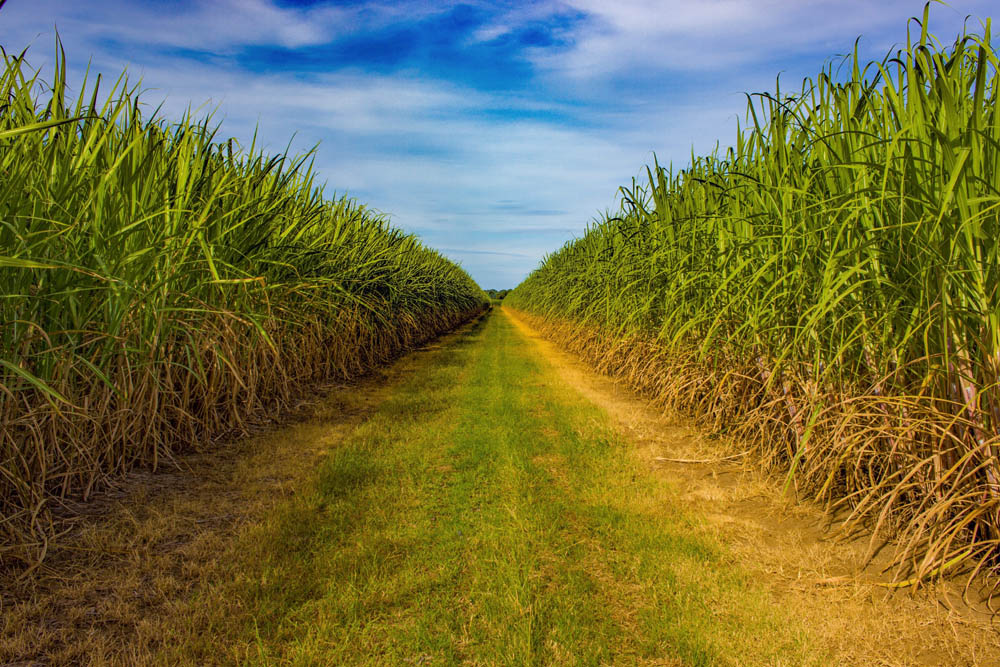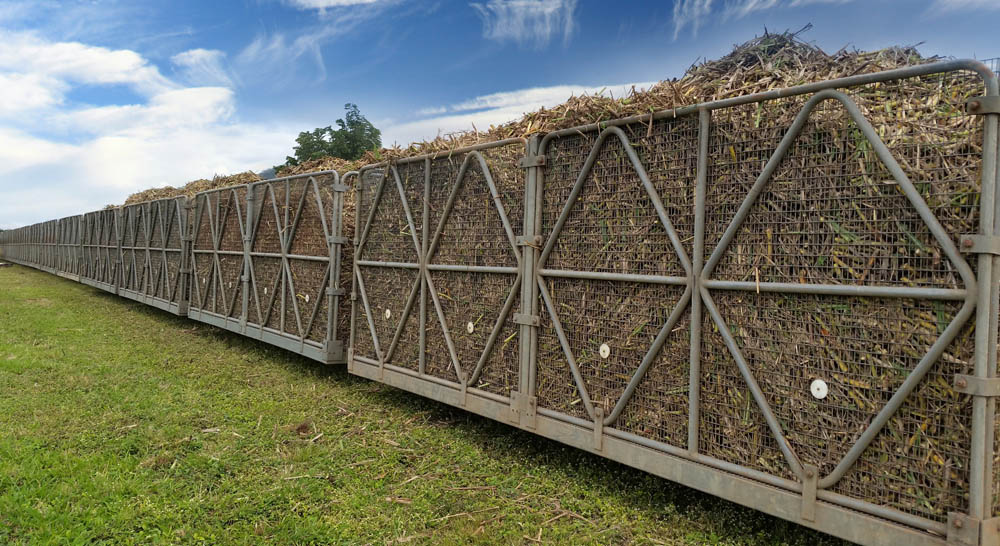- GVP $70 million est. Down 0.3% year-on-year.
- Total tonnes crushed was 17% lower year-on-year, at 1.33 million tonnes.
- Sugar prices remained strong with the average Australian spot price for 2022-23, 14% higher year-on-year.


Production
As a result of the flooding and continued wet conditions limiting access to crops for timely management practices, the total area harvested was down 11% for the 2022 crushing season from 2021, at 12,651 ha along with cane yield per hectare at 105 tonnes/ha. 171 The total tonnes crushed for the Northern Rivers industry was 1.33 million tonnes, 17% lower on the
Total cane crushed by each of the three mills servicing the NSW industry was lower in 2022-23, with Broadwater mill crushing 38% lower tonnage from Richmond Valley growers from the previous year. Condong on the Tweed River recorded 14% lower tonnage while Harwood, supplied by Clarence Valley growers, was only down 9% on the 2021 season. 169 170
Area harvested & sugar production k 171
- Area harvested for milling (ha)
- Sugar produced (t, ISP) (RHS)
Price
Australian sugar price and exchange rate 122 166
- Spot Price
- Exchange Rate (RHS)
Benchmark raw sugar price and global annual production/consumption balance 122 175
- Sugar futures price (USD/lb)
- Global Net Production ('000 tonnes) (RHS)
Trade and Macroeconomic Conditions
Sugar production from the major producers were generally below expectations during the 2022-23 season despite relatively high pricing. 179 While Brazil production lifted over the 2020-21 season, it was still 10% below the record achieved in 2020-21.

Global sugar production has remained stagnant over the last decade with limited investment in processing and crystallisation capacity observed. At the same time global demand for sugar increases by approximately 2 million tonnes per year. 179 In recent years Thai cane growers have diverted cropping area to casava in response to strong demand from China for chips and starch used for ethanol production and animal feed. 177 Similarly producers in Brazil also have switched some area to corn and soybean production. 176 Ethanol production especially for Brazil and India cane production remains an important driver, and dependent upon competing oil prices and various government ethanol mandates. An estimated 4.5 million tonnes of sugar equivalent was diverted to ethanol production in India representing 13% of India’s estimated production in 2022-23. 176
Outlook
NSW cane production from the 2023 season is anticipated to continue to reflect the effect of the 2021 and 2022 flooding events which disrupted cropping programs. Despite this, the industry has reported continued interest in sugarcane production, given relative robustness of sugarcane to flooding compared to many alternate crops grown in the Northern Rivers region and recent strong prices. 60
Stronger Primary Industries Strategy
2023 Winburndale Trout Muster
Strategic Outcome

- 6.1 Assess and monitor natural resource health for sustainability
- 6.4 Improve the quality of the natural resource base

This Trout relocation effort had double benefits, making the Brown and Rainbow Trout available to recreational fishers and assisting in the establishment of a new threatened Macquarie Perch population. Macquarie Perch has not been formally identified in the Macquarie River catchment for over 70 years.
Currently the Winburndale Dam and Rivulet contain a healthy self-sustaining population of Brown Trout that cannot be accessed by recreational anglers due to it being a protected water catchment with no public access. The site is also the location of the recent re-introduction of Macquarie Perch into the catchment. This is a unique opportunity to boost recreational fish in the area and assist in the recovery of a threatened native species at the same time.
The re-introduction of the Macquarie Perch is thanks to a joint research effort between NSW DPI and the University of the Sunshine Coast using an innovative hormone therapy to breed the ‘Macca’. Researchers implanted a hormone into a female fish and almost all of them spawned naturally with males in the tanks at Narrandera Fisheries Centre. Until very recently, only wild-caught spawning Macquarie Perch could be successfully bred in hatcheries. The bred fingerlings were then released into the Macquarie-Wambuul a few years ago at the Winburndale Dam and Rivulet where the Trout Muster took place. The Macquarie Perch was once a very important recreational species, however, there have been major declines in its abundance in all rivers in NSW.
This really is a momentous event, with a goal of giving the newly stocked Macquarie Perch fingerlings the best chance of survival, whilst also relocating local Trout from the dam to an accessible location for fishers. For more details, please visit the NSW DPI Fisheries website https://www.dpi.nsw.gov.au/fishing


